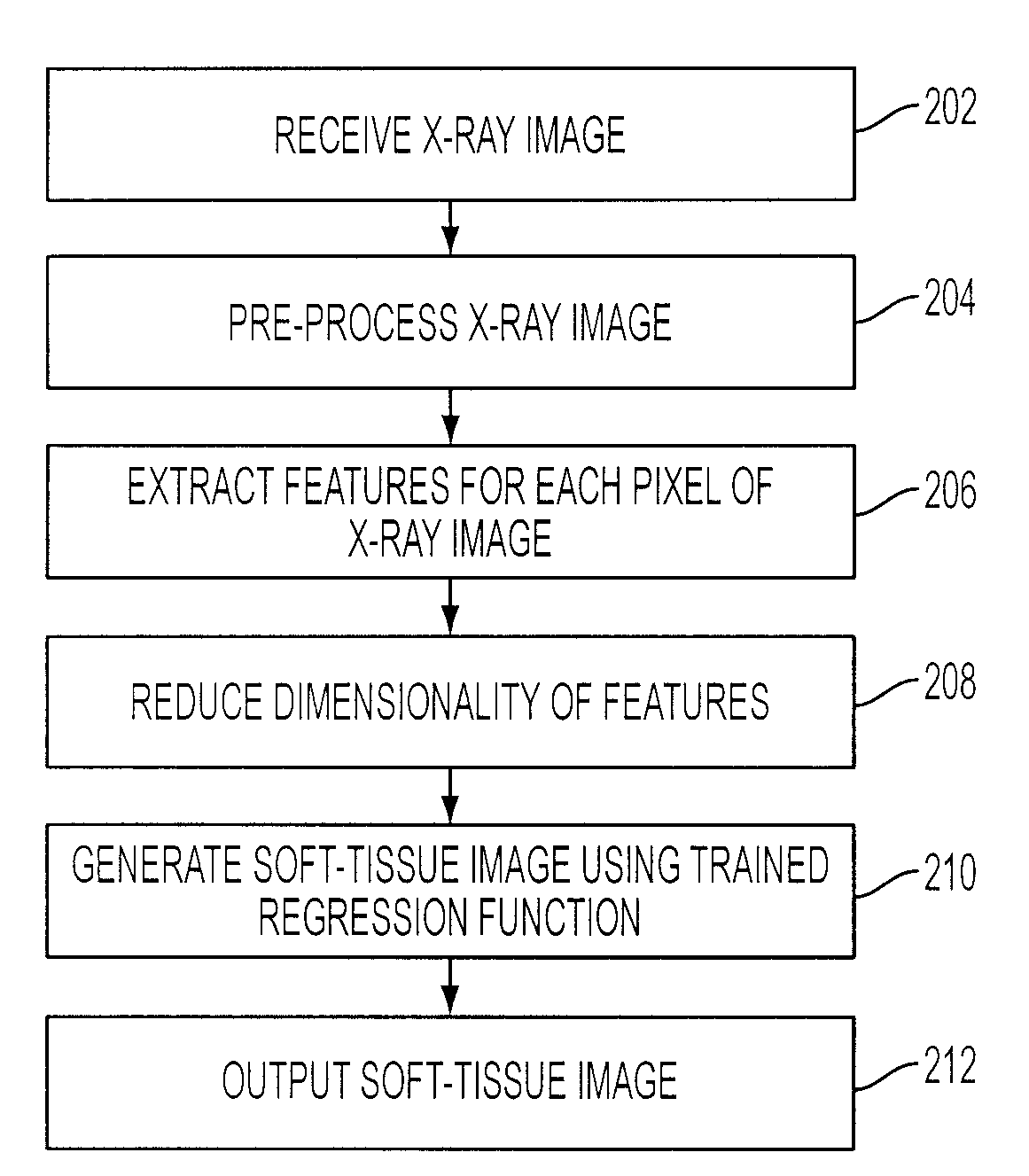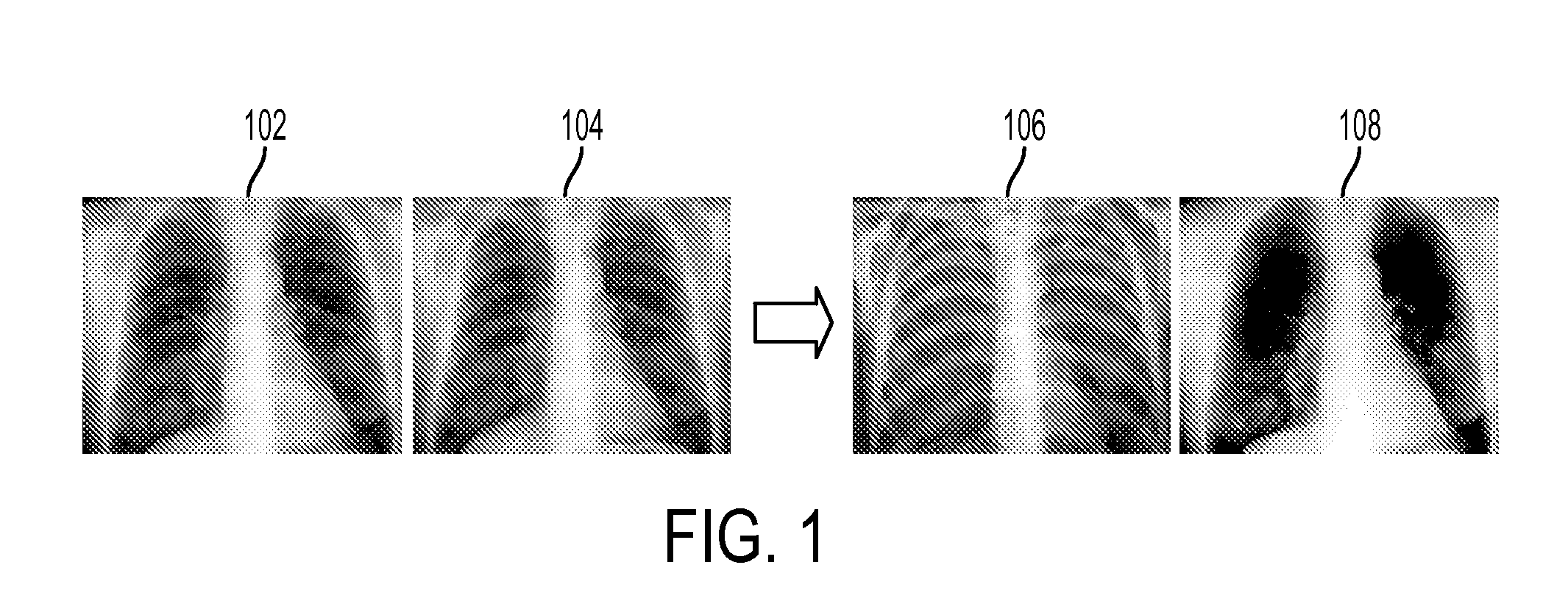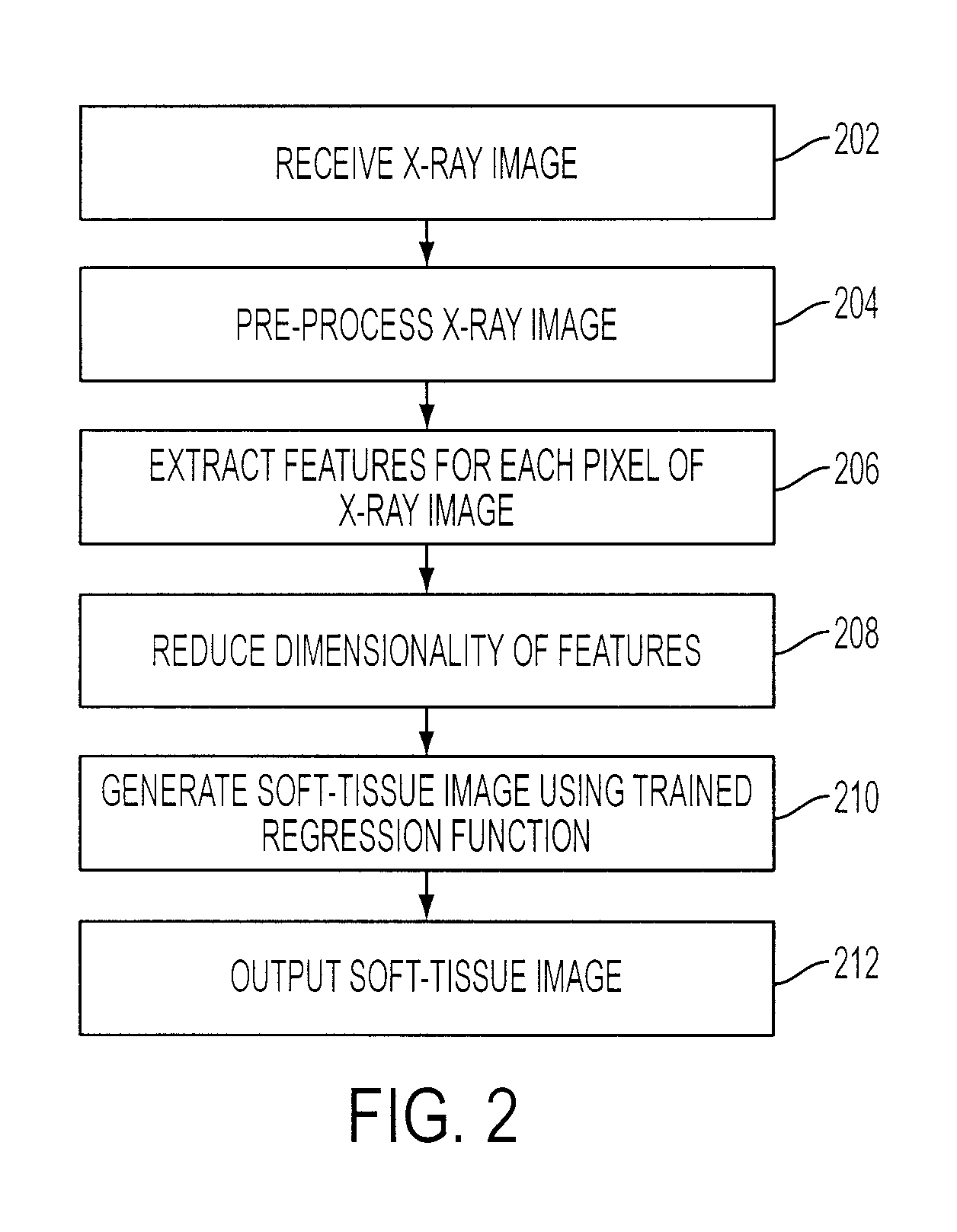Method and system for bone suppression based on a single x-ray image
a single x-ray image and bone suppression technology, applied in the field of x-ray imaging, can solve the problems of difficult to detect lung nodules (i.e., potential lung cancer), difficult to detect nodules in chest radiographs, etc., and achieve the effect of suppressing bone structures, reducing the dimensionality of features, and reducing the set of features for each pixel
- Summary
- Abstract
- Description
- Claims
- Application Information
AI Technical Summary
Benefits of technology
Problems solved by technology
Method used
Image
Examples
Embodiment Construction
[0018]The present invention is directed to a method for suppressing bone structures in x-ray images. Embodiments of the present invention are described herein to give a visual understanding of the bone structure suppression method. A digital image is often composed of digital representations of one or more objects (or shapes). The digital representation of an object is often described herein in terms of identifying and manipulating the objects. Such manipulations are virtual manipulations accomplished in the memory or other circuitry / hardware of a computer system. Accordingly, is to be understood that embodiments of the present invention may be performed within a computer system using data stored within the computer system.
[0019]Embodiments of the present invention utilize a learning-based regression model for predictive bone suppression in an x-ray image. The regression model estimates a soft-tissue image from an input x-ray image (radiograph). The regression model is trained using...
PUM
 Login to View More
Login to View More Abstract
Description
Claims
Application Information
 Login to View More
Login to View More - R&D
- Intellectual Property
- Life Sciences
- Materials
- Tech Scout
- Unparalleled Data Quality
- Higher Quality Content
- 60% Fewer Hallucinations
Browse by: Latest US Patents, China's latest patents, Technical Efficacy Thesaurus, Application Domain, Technology Topic, Popular Technical Reports.
© 2025 PatSnap. All rights reserved.Legal|Privacy policy|Modern Slavery Act Transparency Statement|Sitemap|About US| Contact US: help@patsnap.com



